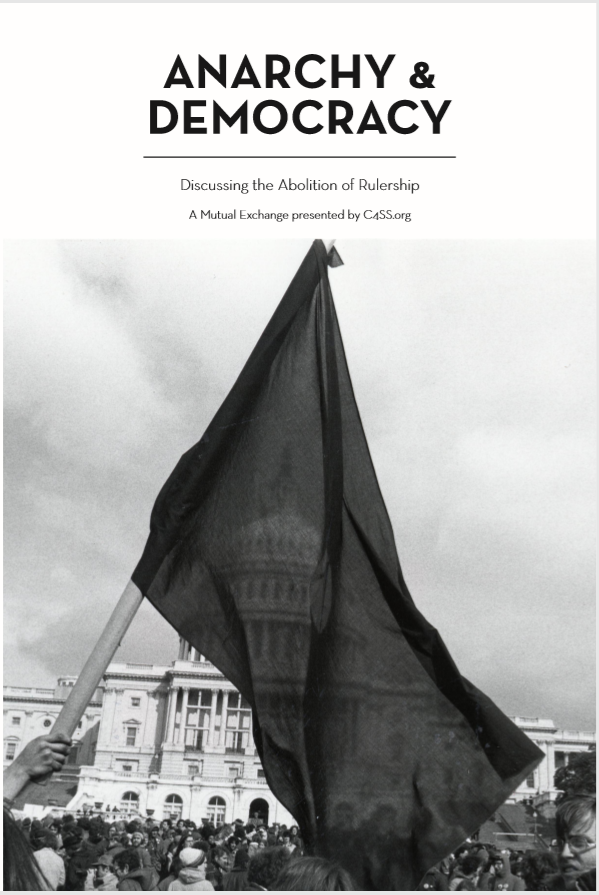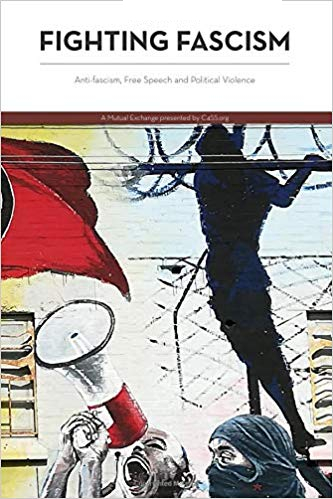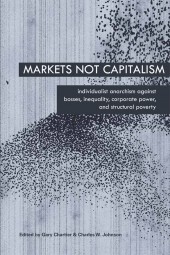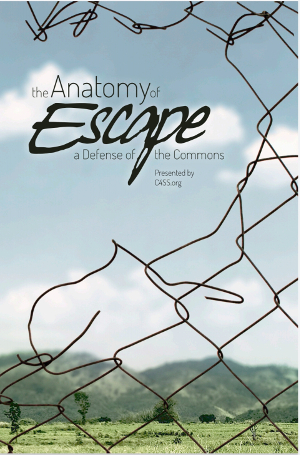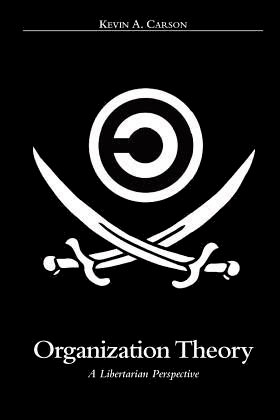Running parallel to the struggle between capitalists and workers is the conflict between those who value a society that respects plurality and diversity and those who demand conformity and homogeneity. Pluralism is a well established doctrine. It appears in many different ideologies to varying degrees: liberalism, anarchism, social democracy, and even some forms of right libertarianism contain pluralistic aspects. On the opposite pole hangs the doctrines of sameness and orthodoxy that have gone by many different names; conservatism, traditionalism, perennialism, integralism, and most damning of all, fascism. Since we’re talking about a broad historical trend that transcends particular ideologies, let’s simply call those belonging to the first group pluralists and the latter homogenizers, since like the machine of the same name they seek to grind down diverse elements into a uniform, undifferentiated substance.
Proponents of homogenizing ideologies argue that diversity inherently causes conflict, they claim that people need shared cultural values to form a cohesive society. If we all believe in different gods, can’t agree on how many genders there are, don’t speak the same language, don’t have the same conceptions of family, then society will crumble into chaos and, dare I say it, anarchy! Homogenizers tend to straw-man pluralists as being inconsiderate of the need for social cohesion. When it comes to the question of cohesion, what pluralists actually tend to believe is that broader values like liberty, equality, justice, and solidarity can act as the glue that binds people together, fulfilling the need for social cohesion.
It’s important to note, however, that pluralists do not mindlessly believe that throwing a bunch of people together that don’t respect each other’s differences will automatically result in a stable society. Pluralists are generally pretty aware that an actual solution is needed in order to foster stability. Though the exact solution might vary depending on the specific pluralist ideology (liberalism, anarchism, libertarianism, etc), pluralists in general claim that people with different value systems can indeed get along if they choose to embrace a broader set of meta-cultural values which emphasize respect for diversity, alongside their own particular customs. In a pluralistic system, each individual can have their own autonomous cultural space, so long as they agree to respect one another’s boundaries. This does not mean that people have to abandon their own customs and assimilate, just that they are better off if they recognize that it’s mutually beneficial for all involved to accept and embrace the fact that not everyone will have the same cultural or religious preferences.
In other words, people can hold their own unique cultural values that coexist with those broader shared values and still come together voluntarily to defend their respective autonomy. You can be a straight Christian or devout Muslim and I can be a bisexual atheist heathen so long as we respect each other’s differences and refrain from using the law (i.e., state violence) to assert power over one another. We can also work together to defend one another’s rights to be different, and in doing so, find a kind of natural, solidaristic social cohesion. This is a cohesion of volition, it arises naturally out of mutual aid and community defense. We don’t need to have the exact same identity, or even a remotely similar identity if we can find common ground through a desire for autonomy and through our innate need of mutual aid.
Consider the rebel Zapatistas in Chiapas Mexico. The Zapatistas are a group of indigenous and mestizo libertarian socialists that rose up against the Mexican state in response to Nafta privatization schemes. They speak a multitude of different languages. According to a 2010 census 38.1% of the indigenous people in Chiapas speak Tzeltal, 34.5% Tzotil, 15.9% Chol, 4.5% Zoque, 4.4% Tojolabal, 0.7% Mame, 0.5% Kanjobal, and 1.3% speak 45 other minor languages.[1] That’s 52 different languages! Alex Khasnabish, author of Zapatistas: Rebellion From The Grassroots To The Global, points out that respect for diversity is integral to the Zapatista ideology, political structure and even their very notion of justice itself:
The Zapatistas’ notion of ‘justice’ is not simply a demand for the just application of the law or even the reformation of the legal system but rather for a society within which dignity and respect are the primary standards according to which people are treated. The Zapatista conceptions of democracy, liberty and justice rest upon a perspective which views the world as a place characterized by multiplicity and diversity, a perspective which in fact is brilliantly articulated by the Zapatista slogan ‘queremos un mundo donde quepan muchos mundos’ — ‘we want a world which holds many worlds’ (Navarro 1998: 162). For a society to be ‘just’, it must not only view difference as legitimate, but acknowledge that difference and radical multiplicity are essential characteristics of existence rather than notions to be merely tolerated.
In fact, the Zapatista emphasis on ‘equality’ is another concept closely aligned with ‘justice’ in that it is an explicit denial of any attempts to standardize or homogenize people. Rather than implying standardization, equality is instead the appreciation and respect for difference, the appreciation and respect for autonomy.[2]
The Zapatistsas organize themselves through a decentralized confederation of village level assemblies that employ a mixture of direct and consensus democracy where all over the age of 16 have a direct say in the affairs of the community. This system covers half the state of Chiapas. They fought the Mexican state, the drug cartel and have managed to hold onto this anarchic way of life since 1994. If diversity was inherently incompatible with social cohesion and synonymous with societal collapse, how could a stateless society founded upon respect for diversity defend itself against a well armed, militaristic state with superior logistics and technology for thirty one years? That’s longer than the existence of famously homogenous societies like Nazi Germany or fascist Italy. So much for the master races and supposed superiority of homogeneity.
If the Zapatistas aren’t enough to convince you that a diverse group of people can put aside their differences and come together for a common goal over a long period of time, exist harmoniously, and defend themselves, we also have the example of Rojava, another libertarian socialist confederation in North and East Syria in which several different languages are spoken and in which many different ethnic and religious people not only choose to coexist but fought valiantly against the homogenizing terror of ISIS from 2012 to the present. It is arguable that without the efforts of the YPG/YPJ in Rojava, the reign of ISIS might have been prolonged. There is also the Swiss Confederation, often called a state of volition rather than of nation, since four different languages are spoken, each primarily dominant in a different Canton. The Swiss Confederation was founded on September 12th, 1848, 177 years ago. Such a society, statist or otherwise, could not exist for a long time without some degree of underlying respect for diversity baked into the culture.
Along with the evidence examined, it is also hard not to conclude that, along with class systems and state apparatuses, homogenizing ideology is one of the major contributors to human conflict, and ironically a primary enemy of the harmony which it seeks so desperately to achieve. World War II alone killed 50 million people, and it was started by a man who’s primary obsession was with that of a dominant homogenous culture. Hitler and his pawns thought that if only everyone was a blonde haired, blue eyed, god-loving German patriot then all the world’s problems would wither away and there would be harmony and peace. But such thinking brought only death, destruction, and dissolution of the very fabric of society itself. Nazi warmongering doesn’t even scratch the surface of the wave tribalistic conflicts that have been ravaging the globe ever since. For instance, the genocide of Palestinians by the Israeli ethnostate, a homogenizing force if there ever was one.
While the Zionist movement certainly had support before the Holocaust, it gained real popularity and momentum afterward. Some people in the Jewish diaspora initially saw the fledgling Jewish state as a necessary measure to ensure their safety in a world that was hell bent on destroying them for no good reason. And, I can empathize with their pain while understanding the flaws inherent to that solution. Persecution sometimes drives people towards nationalistic solutions which encourage homogeneity and tribalism. But more often than not nationalistic solutions result in people engaging in actions which mirror the persecution they initially endured, such is the case with Zionist movement. Right now as I type, Gaza still continues to be leveled by Israeli bombs. Donald Trump, the most powerful ally of the Zionist state has openly talked of the ethnic cleansing of Gaza.[3] A portion of the oppressed made the choice in the wake of the Holocaust to become the oppressor as a result of their trauma. Others belonging to the Jewish diaspora rejected and still continue to reject homogeneity and nationalism and that’s a better decision in the long run. The Israeli-Palestine conflict will not end once Gaza has been ethnically cleansed. In response to the atrocities committed by the Israeli state, many Palestinian survivors will endorse the xenophobia and campism of Hamas, and I can empathize with their pain and suffering as well while recognizing that the ideology of Hamas ultimately has the same problem that Zionism does; the homogenizing tendency. The entire process is a negative feedback loop, and it often begins when a dominant majority decides to impose its culture on the minority.
Let’s look at a theoretical: Imagine that there are two groups, Group A and Group B. Each group has a different competing cultural movement within itself, a homogenous movement which seeks to establish a domineering monoculture and a pluralist movement which allows for many different cultures to exist autonomously, side by side. When the pluralist movement becomes hegemonic in both groups the two groups have a higher chance of being able to peacefully resolve their conflicts because a core tenet of their culture is coexistence. They don’t inherently interpret human relations as being a zero-sum game, in which only one culture can be dominant. The homogenizing mindset creates a mentality of fear and paranoia, which is further exacerbated by material scarcity.
On the other hand, pluralistic groups tend not to view other peoples as potential threats unless they have a very good reason to, and even when they have a reason to, they are more likely to seek out a diplomatic solution before resorting to a violent solution. Meanwhile, when the homogenizing mentality becomes hegemonic in one group the risk of conflict increases. But even then, the potential for deescalation remains greater if the other group holds fast to its values of coexistence, giving the hostile group a chance to work out its own problems internally. This does not mean that conflict can always be avoided, but that its risk can be mitigated. What about when both groups embrace the homogenizing influence though? Conflict, chaos and annihilation are all but guaranteed due to the innate out group hostility of homogenizing ideology.
The same logic applies not only to intergroup relations, but to intragroup dynamics. In this case too, homogenizing ideology often increases friction more than it decreases friction. As a pluralist I can get along with any other pluralist regardless of what else they believe because we all agree on the basic principle of live and let live. I live how I want; they live how they want. We defend each other’s right to do so and thus feel solidarity for one another regardless of our cultural differences. It’s our love of individual freedom that unites us and creates harmony. It doesn’t matter if we speak a different language, worship different gods (or none at all), prefer different familial structures, or have different skin colors. When an ideology that seeks to homogenize society is introduced though, it creates a self-fulfilling prophecy: violence, sectarianism, oppression, and ultimately, disunity. Conflict is a likely outcome because homogenization requires domination in order to eliminate diversity. It’s impossible to eliminate all human variety and to control all variables, and so a power struggle is inevitable when domination becomes the primary human relationship governing society. This is because the groups that are being dominated and assimilated will have no other choice but to defend themselves, which escalates conflict.
The pressure of conflict can unfortunately push target minorities to embrace campism in self-defense. When a majority group decides to target a minority within itself, it signals to the members of that community that they are no longer a part of the in-group which can understandably trigger a fight response. For instance, due being targeted by the US state, and ostracized by a large segment of the US public, some members of the Palestinian diaspora living in the US look to anyone who’ll stand up against the Israeli state or its imperialist ally, America, as a potential ally, including rival imperialist powers like Russia or China and their allies, North Korea and Iran. However, that’s a strategic mistake since those states either engage in the same type of external conquest, or internal subjugation of minorities that the United States does. In the case of Russia, both. In this example, or any other, the homogenizing forces which initiated the conflict will undoubtedly take advantage of this strategic blunder to bolster their claim that the target minority cannot be trusted creating an even greater sense of alienation. Alas, the prophecy fulfills itself as conflict intensifies.
The good news is that the homogenizing ideology cannot escape the inevitable creep of entropy. Even where homogenizing factions have asserted totalitarian control, believing that they have finally freed themselves from “subversive elements”, they eventually find control slipping from their hands, as they can’t prevent new factions from forming within, causing ruptures. To diverge is human nature! For instance when the Nazis took power they immediately had to purge the followers of Strasser and Rohm or face a power struggle from within. Also consider the Bolsheviks, while they did not espouse ethnic homogeneity they did believe strongly ideological homogeneity and that resulted in a similar outcome; factionalism, purges, power struggle, strife and eventually disintegration. Authoritarian homogenization can never truly last because we are all individuals and all have our unique way of thinking, the homogenizers can’t escape this fate either. When they think they are finally on the same page, someone turns to the next and their fragile world is torn asunder because they do not respect diversity of thought, let alone identity, and so they begin to turn on each other which can sometimes give oppressed people and their allies an opportunity to rebel. The only way this could ever be resolved is if humans became some sort of cybernetic hive mind. But hey, maybe that’s the end goal of the techno-fascist police state.
Sometimes this pluralist-homogenist conflict gets framed as identical to conflicts between atheism and religion, but it’s not. The New Atheists of the early aughts tried to frame the violence in the middle east as a struggle between barbarous adherents of eastern religion and enlightened western secularists. The general thinking is best exemplified by Richard Dawkins in the first couple pages of his 2006 book, The God Delusion:
In January 2006 I presented a two-part television documentary on British television (Channel Four) called Root of All Evil? From the start, I didn’t like the title. Religion is not the root of all evil, for no one thing is the root of all anything. But I was delighted with the advertisement that Channel Four put in the national newspapers. It was a picture of the Manhattan skyline with the caption ‘Imagine a world without religion.’ What was the connection? The twin towers of the World Trade Center were conspicuously present. Imagine, with John Lennon, a world with no religion. Imagine no suicide bombers, no 9/11, no 7/7, no Crusades, no witch-hunts, no Gunpowder Plot, no Indian partition, no Israeli/Palestinian wars, no Serb/Croat/Muslim massacres, no persecution of Jews as ‘Christ-killers’, no Northern Ireland ‘troubles’, no ‘honour killings’, no shiny-suited bouffant-haired televangelists fleecing gullible people of their money (‘God wants you to give till it hurts’). Imagine no Taliban to blow up ancient statues, no public beheadings of blasphemers, no flogging of female skin for the crime of showing an inch of it.
Now, I won’t pretend I was above this simplistic thinking for my entire life. As a young atheist, this book especially resonated with me. But, the narrative fell on its head pretty quickly when I began to delve into revolutionary history. Dawkins claims there would be no public beheadings without religion, however one has only to gesture to the French revolution to see how silly that claim is. How about his claim that the troubles and the Israeli-Palestinian conflict wouldn’t exist? Well, there’s no particular reason why colonialism wouldn’t still exist in the absence of religion, the Soviets found their justifications without it just fine. Ask the Ukrainians and Ingushetians about that one. So, while I am an atheist, and I even enjoy a good take down of religious fundamentalism to this day, it’s not as simple as rational atheism vs irrational religion. The fact is, the homogenizing ideology which drives human conflict can be present within all sorts of belief systems, theistic and atheistic alike.
Though I don’t fully agree with anarchist Josiah Warren’s ultra-individualistic conclusions, falling somewhere between individualist and social anarchism myself, I can’t help but feel there was a grain of truth when he said “Infinite diversity instead of ‘’unity’ is inevitable.”[4] However, I would modify this by saying that infinite diversity and unity are not necessarily antonyms, but that infinite diversity needs to be given a lot of room within society. If it does not find that room and is suppressed as the forces of homogenization desire, it will lead to conflict; power struggle is the only active option when autonomy is denied. If it is allowed to flourish within a system built upon mutual respect for differences, it will be a source of solidarity, which naturally leads to harmony. As an anarchist, I’m under no illusion that any society, stateless or otherwise can last forever. Change and entropy are, as far as we can ascertain, inevitable. Societies will continue to rise and fall, come and go, ebb and flow. That’s the beauty of “anarchy” in the colloquial and political sense of the word. But that doesn’t mean we should despair and fall into nihilism, which only accelerates entropy, it just means that we have to construct systems which are dynamic, pluralistic, and which account for the many divergent ways of being by fostering respect for diversity. If anarchy can be order, then respect for diversity can be unity. If you value social cohesion, you should be a pluralist, not a homogenizer. Homogeneity is not the solution; it’s the problem.
- “Chiapas: Forever Indigenous” by John Schmal, Indigenous Mexico.
- Zapatistas: Rebellion From The Grassroots To The Global by Alex Khasnabish, pg. 91.
- “Trump doubles down on plan to empty Gaza. This is what he has said and what’s at stake.” by Lee Leath, AP News.
- The Motives for Communism by Josiah Warren, Anarchist Library.



